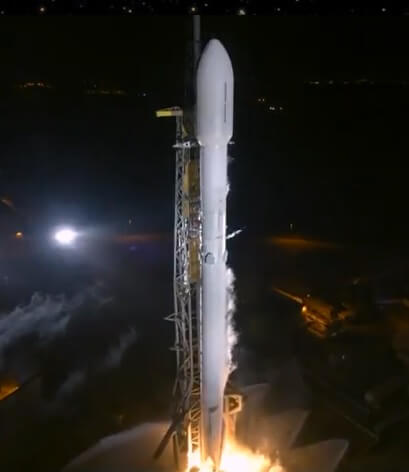At 0100 GMT the mysterious ZUMA payload was launched from Cape Canaveral Air Force station (CCAFS) by a Falcon 9v1.2R rocket. The launch took the payload, reportedly owned by the US Government and built by the Northrop Grumman Corporation, to low Earth orbit. There is conjecture that the spacecraft was to be used for signals/electronics intelligence gathering on behalf of the US military. However it soon became apparent that the ZUMA spacecraft had failed to become operational after launch, probably through separation failure, or due to a problem just after separation.
The ZUMA satellite did apparently achieve orbit. The official US space-tracking system, operated by US Strategic Command (USStratcom), has given the ZUMA payload (probably still connected to the second stage) an orbital designation 2018-001A (catalogue number of 43098) along with a codename of USA 280. This normally indicates that at least one orbit was achieved by the object, albeit that it may have re-entered the Earth’s atmosphere soon afterwards. The orbital parameters (apogee, perigee, inclination etc.) for military launches are not normally released.
SpaceX subsequently announced that its Falcon 9 rocket had worked correctly. Some have noted that the launch adapter was built by ZUMA’s manufacturer Northrop Grumman lest the blame for any separation failure lay there.
Post Script: There are no indications that the Falcon 9 upper (second) stage was designed to survive re-entry or land as was previously conjectured by this column. However, the first stage of the Falcon 9 did a successful landing as planned at Landing Zone 1 (LZ1) at Cape Canaveral seven minutes and 59 seconds after lift off.

Rocket ignition: ZUMA is about to be launched into orbit. Courtesy: SpaceX








